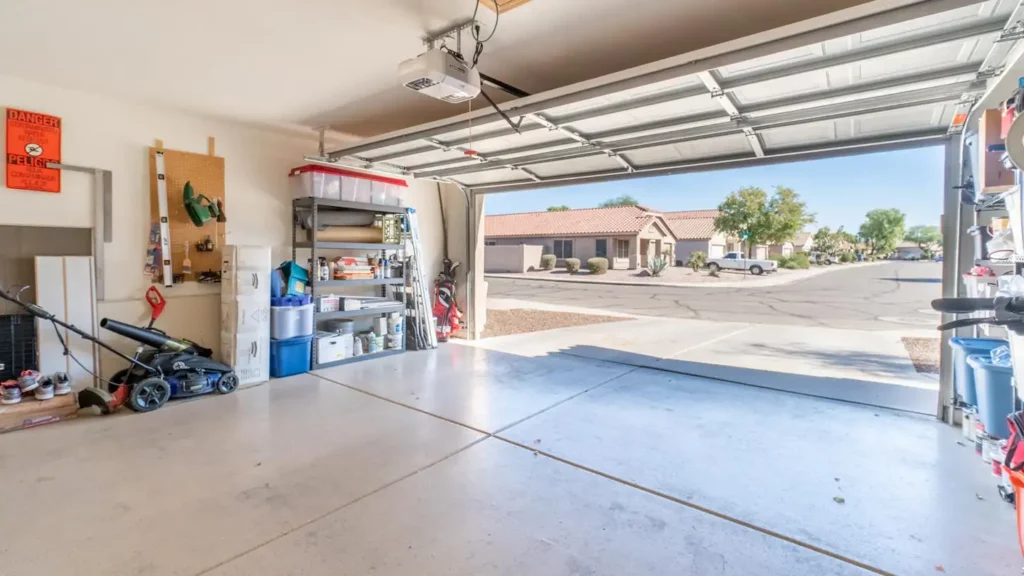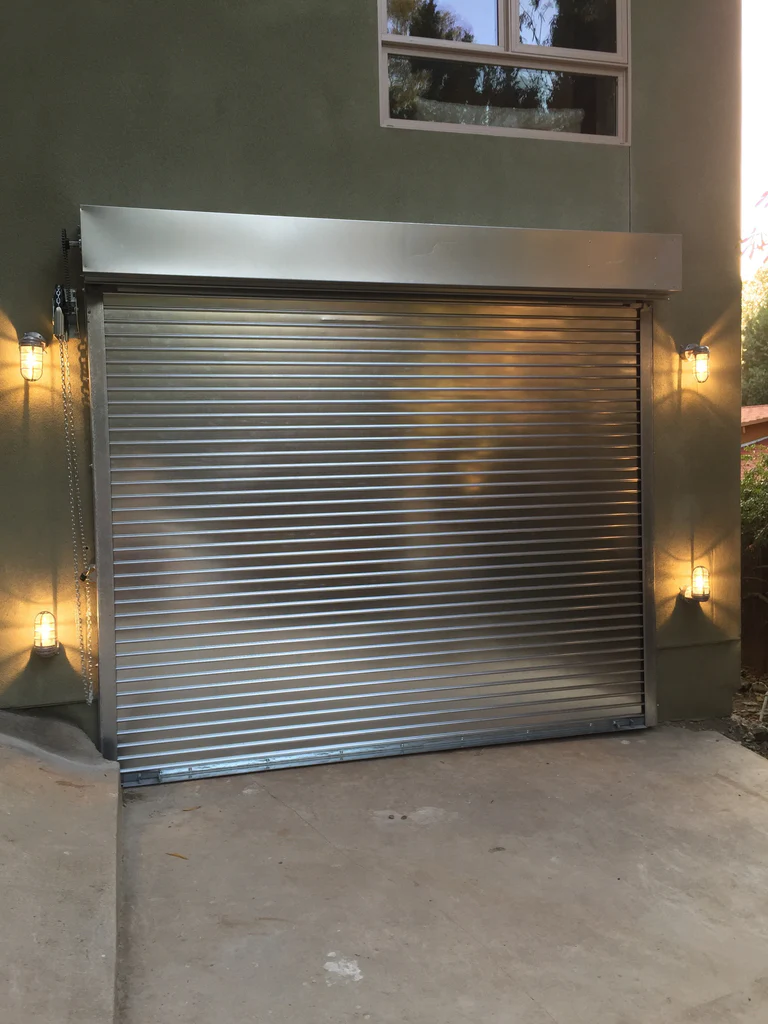Looking forward to your next home improvement project? What will it be this time? One possibility could be insulating your garage. For this reason, you may be wondering about the average cost to insulate garage.
The final cost of a garage insulation project depends on multiple factors. Some of them are insulation, labor costs, finish or no finish, clean-up costs, etc.
What’s important is that at the end of this project, your garage will retain its temperature for a longer time. It will stay warm in the winter and cool in the summer. As a result, you will spend less on your energy bills.
How much does it cost to insulate garage – short answer
Our home improvement experts have researched insulation and labor costs carefully. As a result, we have estimated garage insulation costs anywhere between $1000 and $8000.
The difference between the two amounts is enormous but can be easily explained. So, keep reading to discover the cheapest and most expensive options for insulating your garage.
Should you insulate your garage?
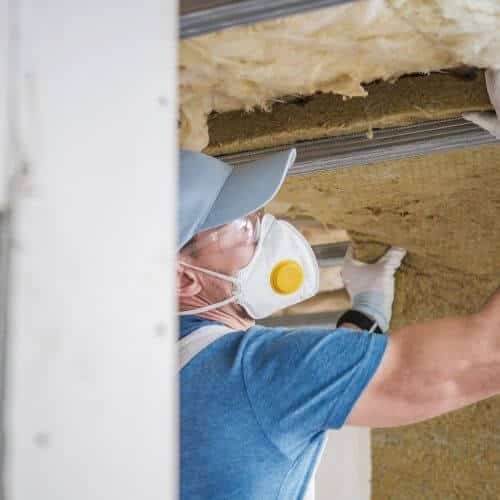
Garages can be a part of your home or can be detached. This annex plays an essential role in the suburb lifestyle. We use garages to park our cars and other purposes, such as storage or entertainment. Some homeowners may not even park their vehicle inside the garage and repurpose it as a living space.
Being a homeowner often comes with the desire to improve your property. But, once you’ve finished other home improvement jobs, you may wonder – should you insulate your garage?
The answer is yes, especially when you plan to use the garage for something other than parking your car. The most common alternative uses of garages include:
- Storage – maximize your storage space by using solutions such as ceiling storage systems, bike lifts, and door storage.
- Workshop – garages can be perfect for DIY projects such as repairing vehicles or upcycling furniture.
- Mudroom for storing outdoor equipment – avoid tracking mud when you come inside by using the garage as a mudroom. This space will ensure passage between your home and your yard.
- Gym – skip the expensive gym memberships and the time you waste getting to a public gym.
- Studios for hobbies – such as art studios for adults or arts and crafts spaces for kids.
- Home office – to make working at home more productive by creating a dedicated space with fewer distractions.
- Living space – you can increase the livable square footage of your home by adding a room. The area can even include a kitchen and a bath. The new space can be very cozy if you know how to insulate a garage for living.
- Upgraded parking space – with overhead storage for maximum floor space, parking aids, wireless parking sensors, improved lighting, and wall bumpers. [1]
Does insulating a garage make a difference?
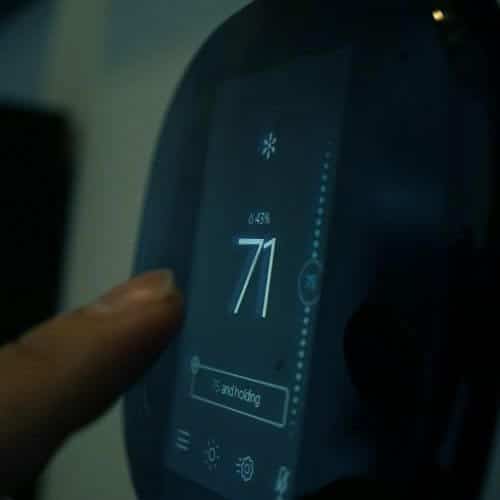
Yes, insulating your garage comes with multiple benefits. Insulation is something you will need to ensure a comfortable living or workspace:
- Keeping the garage at a regular temperature;
- Saving on energy bills;
- Reducing the transmission of heat and cold;
- Protecting stored items from moisture;
- Avoiding carbon monoxide poisoning;
- Reducing noise transmission;
- Preventing insect infestations.
What influences the average cost to insulate garage?
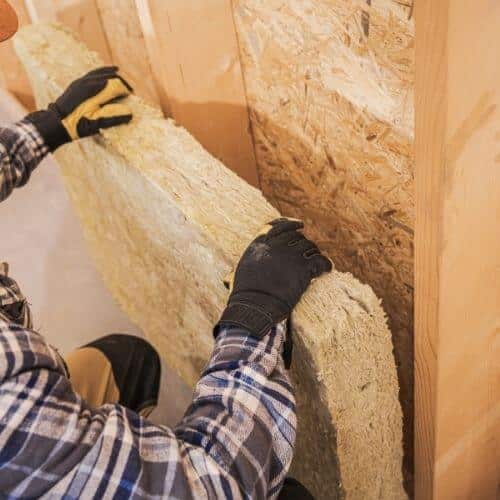
Wondering how to insulate a garage cheaply? Several factors influence the final cost of an insulation project, including:
- Type of insulation used
What is the best insulation for garage walls? It depends on the purpose of the garage or living space you are creating. The most popular types of insulation used for garages include:
- Rigid foam – easy to install and with a high R-value, this type of insulation can allow pests to pass through. A 2’’ thick panel of rigid foam costs around $11.
- Fiberglass – is inexpensive and easy to install without help but is an eye, skin, and lung irritant. A 40-sq ft roll of fiberglass insulation costs approximately $26.
- Cellulose – its main advantages are being fire-resistant and eco-friendly. However, its high cost and becoming less effective over time can prevent many people from choosing it. A bag of blown-in cellulose costs around $30 to $40.
- Spray foam – delivering excellent insulation performance, spray foam is pest resistant and fills gaps and cracks. The downsides are that you can’t install it yourself and the high costs – the approximate price per square foot varies between $1 and $5.
- Reflective insulation – less than $20 per 24’’x10 ft. makes Reflectix a very affordable option. Still, its lower performance is a common choice for garage doors. Insulating your entire garage with reflective foil is usually not an option. [2]
- Width of insulation
A thicker layer of insulation will cost more than a narrow one. However, in the long term, you may save more money by using more insulation to reduce energy costs.
- The surface of the garage
Typical American home garages for two vehicles range from 400 to 700 square meters. Standard dimensions include 20×20 (400 sq m), 24×24 (576 sq m), and 24×30 (720 sq m).
- Finish of garage walls
Some homeowners prefer insulating garage walls without drywall to save money, but this may not always be an option. If you use fiberglass insulation, no drywall means you will suffer from irritated skin. Moreover, no drywall and exposed insulation will not look good in a living space.
Drywall is generally the first option for garage wall finish. This lightweight and versatile material cover any unattractive construction features. Additional benefits include cost-effectiveness, ensuring extra insulation, and offering multiple decoration options. A ½ ‘’ x 4 ft x 12-ft regular drywall panel costs under $22.
After installing drywall, you will also need to apply mud, primer, and a coat of paint. These materials, plus other supplies, will add to the final cost of garage insulation.
- The person installing the insulation
Should you install your garage insulation yourself, or should you hire a garage insulation contractor? Transforming the garage insulation into a DIY project can help you save money and reduce garage insulation costs. On the other hand, if time is more valuable to you than money spent on insulation maneuver, the best is to call a contractor’s services.
If you decide to collaborate with a garage insulation specialist, get at least 2-3 quotes before choosing a contractor. Price can fluctuate from one company to another. Contact the company in its low season to obtain better prices.
How much does it cost to insulate a 24×24 garage?
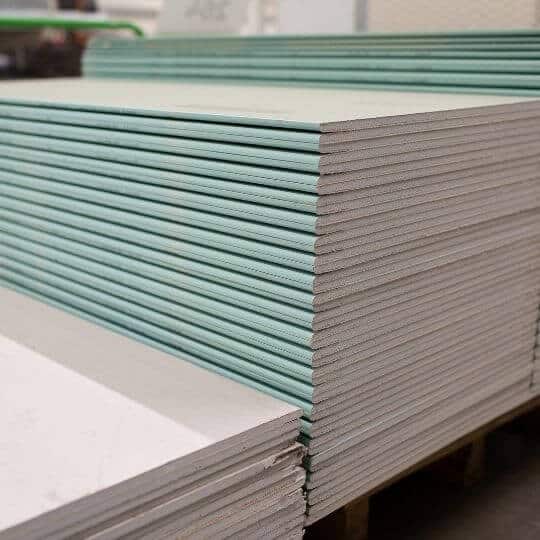
You can look up a garage insulation cost calculator online or make your calculations. Use the following list of expenses to estimate the cost of insulating a 2-vehicle garage:
- Insulation
The cheapest insulation available is reflective insulation, which will cost you approximately $900 for the entire 24×24 garage. The most expensive options are spray foam, at an average of $1,300, and blown-in cellulose, costing $1,400.
- Costs to insulate garage door
The average cost for insulating a garage door is $700. Focusing on the garage door’s insulation is important because this is the entryway for cold or heat coming from outside. In addition, your home will be more energy-efficient even if you insulate the garage door only, without the walls.
- Labor costs
Apart from insulation materials, you will also need to support the labor cost. For insulating a 24×24 garage, you can expect labor-related expenses to reach $1200. Even if installing insulation is not difficult, it is time-consuming and comes with a substantial fee. In addition, special equipment and protective gear are required for blown-in insulation, so you will need to support their cost.
- Garage cleanout costs
What if your garage is full of junk? You cannot complete the insulation project without cleaning up first. A garage clean-up can cost anywhere between $300 and $800. It includes the cost of picking up waste, loading it, and disposing of it properly.
- Drywall and paint costs
Drywalling a garage can cost as much as insulating it, if not more. The average cost for drywalling a 2-car garage is approximately $2850 (insulation not included).
The next and final step is painting the drywall, which can cost anywhere between $200 and $400. Again, the cost depends on paint and supply costs and labor costs.
- Tips to save money on garage insulation
Calculating garage insulation costs will make you think of ways to save money. You must research these money-saving tips in time and reduce costs in the right areas. Purchasing low-quality materials, for instance, is not a good idea as it will affect the final result. Some good tips for insulating your garage on a budget are:
- Choosing the lowest R-value for your climate
If you are lucky to live in a warm climate, you can choose a lower R-value and enjoy excellent results. A lower R-value means a lower price for your insulation project.
- Fill in those air gaps
Even if you purchase the best insulation in the world, leaving air gaps around doors will compromise the final result. You can obtain good results with cheaper insulation as long as you take care to fill all air gaps.
- Choose the right areas to insulate
When your garage is part of your home, the ceiling and the interior wall are already insulated. Therefore, you can skip insulation in those areas to reduce your costs.
- Choose the most straightforward solutions
Don’t you spend much time inside your garage? Do you live in a relatively warm climate? Insulating your garage too zealously may not be necessary. Instead, stick to the cheapest solution that delivers the best results for your situation.
- Do it yourself
Are you a fan of DIY projects? They are all the rage these days, and some people even document their experience and post it online. For example, insulating your garage is a better DIY choice than checking if your septic tank is full, do you agree? Or removing the sewer smell from the basement.
If you are passionate about DIY, you can film your projects, post them online and monetize on your hard work. That is one great way to reduce costs on home repairs and even earn some $$$!
Read Also: How To Run Plumbing to a Detached Garage
Conclusion
The cost to insulate your garage varies. There are two options:
The cheap one
This option uses visible, cheap insulation without finishing and completing the project yourself. For example, suppose you insulated your garage with reflective foil only, DIY. The approximate final cost would be as low as $1000. Of course, protecting the garage door is not included in this estimate.
This low-cost option is not necessarily bad. If you use your garage to park your car, it is better than no insulation. You can do it in less than a day, and you won’t need professional help.
The expensive one
The high-end option will cost you a lot more. Think blown-in insulation, insulated garage door, hire a contractor, apply drywall, purchase various supplies, and provide cleaning services. In this case, the final cost can even exceed $8000. If you decide to convert your garage into an activities room or a small studio, prices can rise exponentially. We will not estimate costs for these, as this post refers to insulation costs only. However, you will have a natural extension of your home in the end. The value of your property will increase significantly, and you will improve your lifestyle.
There is always the possibility of choosing something in-between. For example, you can opt for more expensive insulation but not cover it with drywall. This compromise solution is perfect if you want to reduce the cost to insulate a garage but still increase energy efficiency.
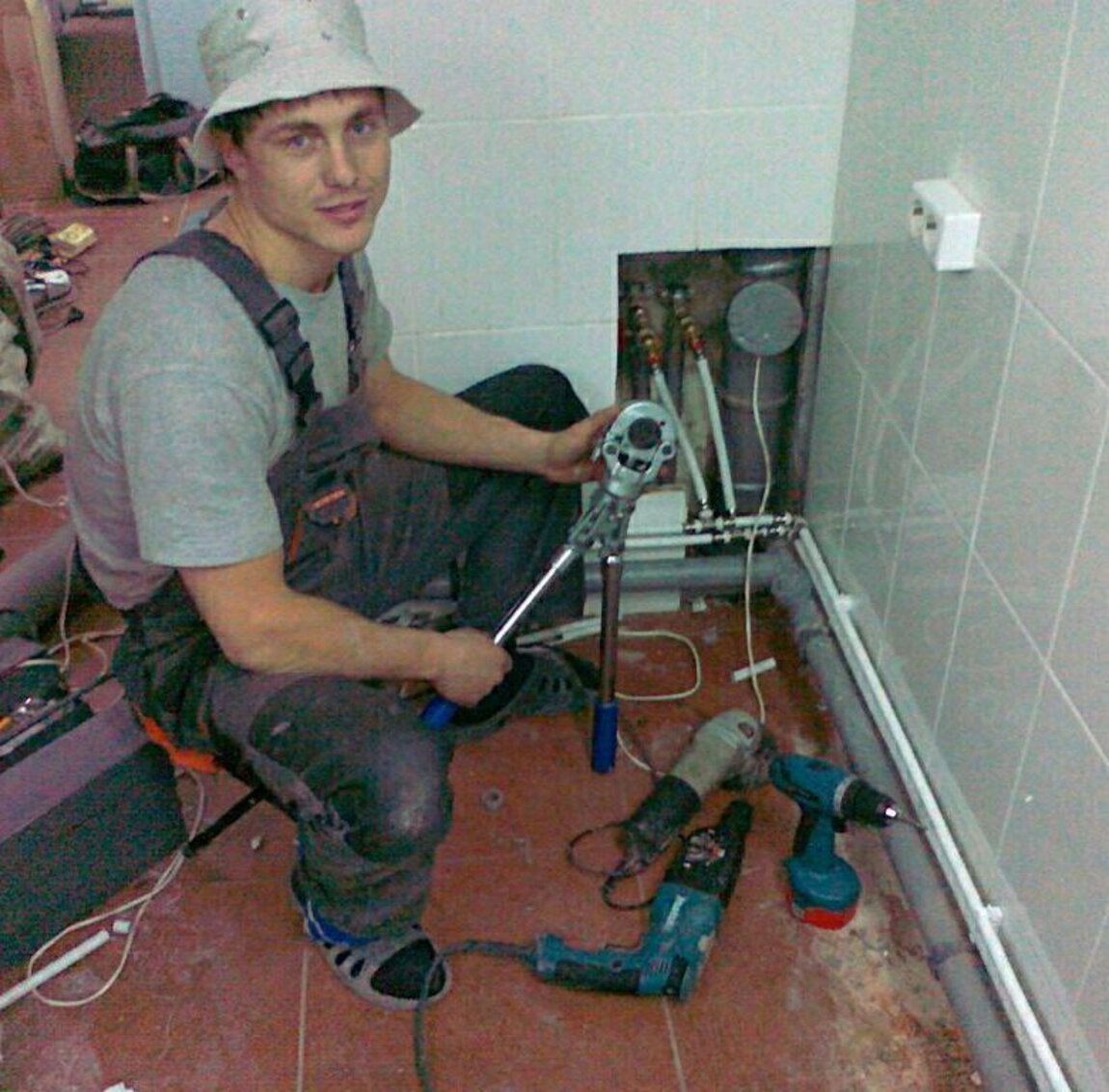
Michael Davis is a heating & plumbing expert who currently works as independent contractor in SC. He also writes for Plumbertip.
For almost 10 years he worked on various plumbing tasks across South Carolina.
